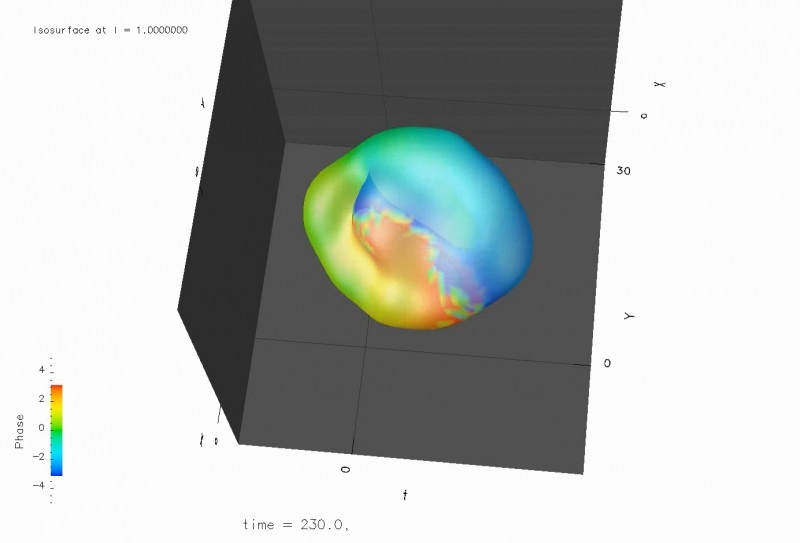7 November 2016
ITMO University researchers predicted and studied a new type of three-dimensional soliton and published their research in Physical Review Letters, one of the most authoritative scientific journals in the field of physics. The importance of these solitons is that their applications cover various fields — from astrophysics to medicine.
Typical wave structures are not stable, as they sprawl out like ripples on water. Thanks to diffraction propagation and dispersion spreading light beams and impulses disperse in a homogenous medium. One can fix it by using light focusing with a nonlinear media. That is how "conservative" optical solitons work: they are stable light waves that are localized by a balance of linear distribution and nonlinear compression in a transparent nonlinear media in which radiation losses are negligible and there is no energy supply.
In comparison with conservative ones dissipative optical solitons have completely different peculiarities like a balance of energy inflow and outflow in a localized area. This balance is possible if only solitons are discrete.
In simple words, dissipative solitons have a specific shape and size.
"Why are these structures very important? When a "conservative" soliton moves on inside an optical fiber, its parameters like, for instance, size change because of the deformation of fiber and noises. Dissipative solitons are resistant to it thanks to their parameters. However nothing comes without cost — one has to provide energy supply. Thanks to its augmented resistance the solitons can be used for data processing," noted professor Nikolay Rozanov, head of ITMO’s Laboratory of Nonlinear Optical Informatics.
ITMO University researchers found out specific conditions of a laser medium in which a new type of topological solitons is developed. These solitons can turn round and process and at the same time remain localized and stable.
This discovery is just as significant as finding a new elementary particle. Furthermore dissipative optical solitons like elementary particles have a specific shape and size.
The approaches offered by ITMO’s researchers can be applied to non-equilibrium systems that have energy inflow and outflow. According to Professor Rozanov, new optical structures can be used for optical tweezers applied to biological and medical analyses.
The article was published in a special section called Editors' Suggestion, which includes selected articles (about one sixth of the whole amount).















